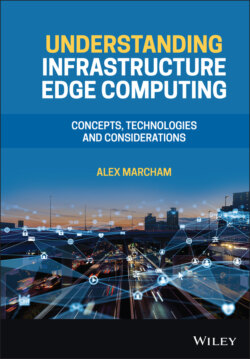Читать книгу Understanding Infrastructure Edge Computing - Alex Marcham - Страница 18
2.3.2 Infrastructure Edge
ОглавлениеThe infrastructure edge refers to the collection of edge data centre infrastructure which is located on the infrastructure side of the last mile network. These facilities typically take the form of micro‐modular data centres (MMDCs) which are deployed as close as possible to the last mile network and, therefore, as close as possible to the users of that network who are located on the device edge. Throughout this book, these MMDCs will typically be referred to as infrastructure edge data centres (IEDCs), whereas their larger cousins will be referred to as regional or national data centres (RNDCs).
The primary aim of edge computing is to extend compute resources to locations where they are as close as possible to their end users in order to provide enhanced performance and improvements in economics related to large‐scale data transport. The success of cloud computing in reshaping how compute resources are organised, allocated, and consumed over the past decade has driven the use of infrastructure edge computing as the primary method to achieve this goal; the infrastructure edge is where data centre facilities are located which support this usage model, unlike at the device edge.
Although it is typically deployed in a small number of large data centres today, the cloud itself is not a physical place. It is a logical entity which is able to utilise compute, storage, and network resources that are distributed across a variety of locations as long as those locations are capable of supporting the type of elastic resource allocation as their hyperscale data centre counterparts. The limited scale of an MMDC compared to a traditional hyperscale facility, where the MMDC represents only a small fraction of the total capacity of that larger facility, can be offset by the deployment of several MMDC facilities across an area with the allocation of only a physically local subset of users to each facility (see Figure 2.1).
